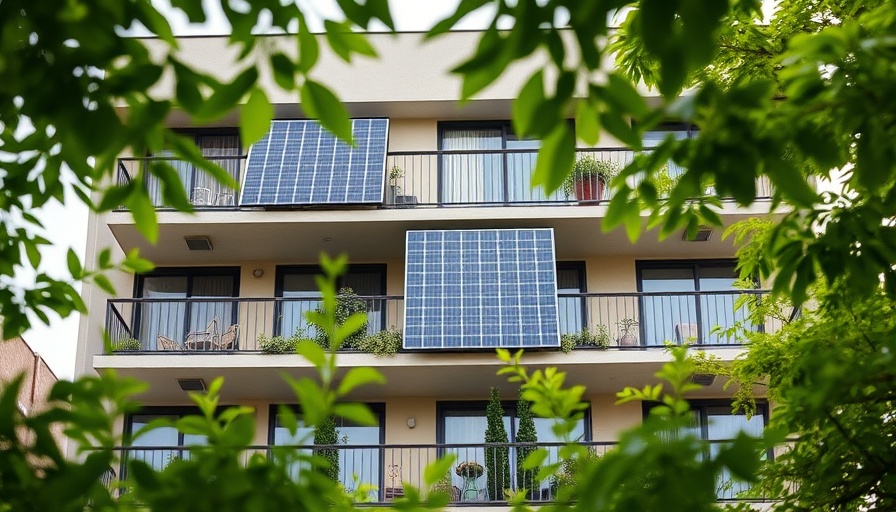
Understanding Plug-In Solar Technology: A Game Changer for Energy Savings
As the world tries to shift toward sustainable living, plug-in solar technology is emerging as an accessible solution for many homeowners and renters. This innovative approach not only allows users to generate their own electricity but also lowers their energy bills while being remarkably easy to set up. Instead of the traditional method of rooftop solar installations, which can be cost-prohibitive and time-consuming, plug-in solar opens the door for numerous households to harness the power of the sun without extensive modifications.
How Do Plug-In Solar Kits Work?
The concept behind plug-in solar systems, particularly those developed in Germany known as balkonkraftwerk, is stunningly simple. Essentially, these DIY kits are designed for easy installation—users can simply hang the solar panels over their balcony or fence rails, plug them into a standard electrical outlet, and start generating solar power. These systems typically come with a micro-inverter, which allows the solar energy to flow directly into the home’s existing electrical circuit. With minimal disruption and the ability to utilize a significant portion of the generated energy onsite, users can enjoy a reduction in their electricity bills by up to 30%.
The Rise of DIY Solar Installations Across Europe and Beyond
Plug-in solar has seen a significant surge in popularity across Europe. Countries such as Spain, the Netherlands, and France have embraced this technology with thousands of installations already in place. Even places like China and the UK are beginning to explore the possibilities. In fact, while countries like Germany have made considerable legal strides—with over 780,000 registered plug-in solar units—other regions are still navigating the regulatory landscape.
UK legislation is beginning to outline frameworks to facilitate widespread adoption of such home energy solutions, but the slow pace can hinder the potential benefits. Similar to the burgeoning e-scooter market, without clear guidelines, the risk of unregulated kits infiltrating the market increases, posing safety risks and complications for both consumers and utility companies.
Addressing Safety and Regulatory Challenges
While the benefits of plug-in solar are enticing, there are legitimate concerns about safety and compliance. Homeowners looking to install these systems should consider the possibility of fire hazards due to overloading circuits and the risks associated with improperly installed units. For this reason, experts often suggest having a certified electrician review the setup.
In Europe, many countries have established safety regulations to address these issues, helping citizens safely embrace renewable energy. The UK government, for example, has acknowledged the need for regulations in their recent Solar Roadmap, which emphasizes a comprehensive safety study aimed at ensuring safe deployment of plug-in systems.
Plug-In Solar's Potential for Energy Democratization
Perhaps the most compelling aspect of plug-in solar is its potential to democratize energy access. This innovative installation method provides an alternative for renters and low-income households who have traditionally been sidelined from solar energy benefits due to high upfront costs and installation complexities.
With a straightforward setup, these systems promise self-sufficiency in energy generation, empowering individuals and families to take control of their energy needs while reducing reliance on traditional power grids. By facilitating easy engagement with renewable energy sources, plug-in solar could thus serve as a transformative tool for equitable energy access.
Conclusion
As the landscape of energy consumption shifts toward sustainability, technological advancements like plug-in solar are instrumental in unlocking new possibilities. As awareness grows and regulations evolve, we may soon see exponential adoption, which could reshape our industry's approach to energy consumption. Embracing these innovations is not just about saving money; it’s about transforming the energy landscape for a cleaner, more sustainable future.
 Add Row
Add Row  Add
Add 




Write A Comment